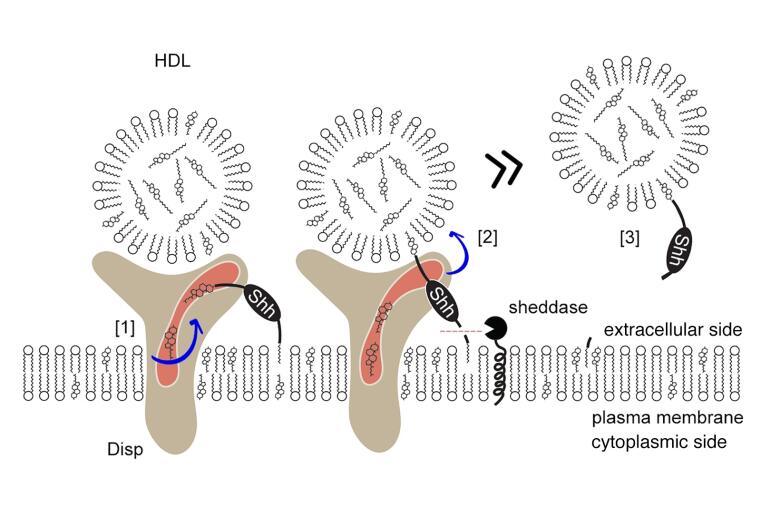
PROJECT A08
Molecular Parameters for the Dynamic Assembly of Hedgehog Signaling Platforms
The Sonic hedgehog (Shh) signaling pathway controls embryonic development and tissue homeostasis after birth. This requires the regulated solubilization of dual-lipidated Shh precursors, which are tightly associated with the outer plasma membrane leaflet of producing cells, by the resistance-nodulation-division transporter Dispatched (Disp). Our project aims to elucidate how Disp controls this process. We have previously shown that proteolytic solubilization of Shh from its lipidated terminal peptide anchors, a process termed shedding, converts tightly membrane-associated Shh precursors into delipidated soluble proteins, but the role of Disp in this process remained unknown. We recently found that Disp is required for Shh shedding and that a serum factor, which we identified as high-density lipoprotein (HDL), is also essential. This led to the discovery that the role of HDL is to accept the cholesterol-modified Shh peptide from Disp (1), and that Disp-mediated Shh transfer to HDL is completed by proteolytic processing of the palmitoylated N-terminal membrane anchor (2). This releases highly bioactive, HDL-associated, N-processed Shh from the cell surface (3). Currently, we are combining biochemical, cell biological and Drosophila techniques to identify the responsible sheddase in vitro and in vivo. Finally, we are currently investigating a second, Shh-independent function of Disp as a membrane cholesterol exporter to HDL, which is essential for cellular homeostasis. Our goal is to uncover unexpected links between Shh morphogen signaling and plasma membrane cholesterol homeostasis and to characterize the multiple cellular functions that depend on Disp function as an exporter of free membrane cholesterol.


